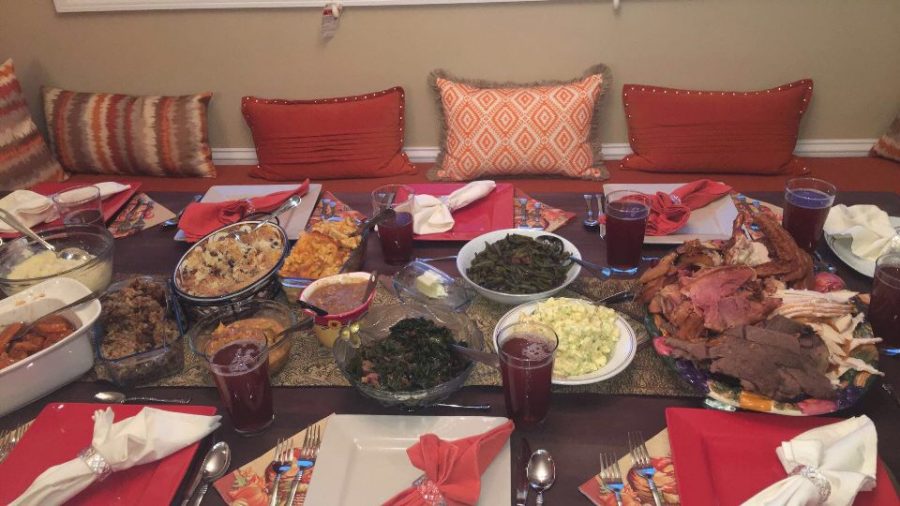Thanksgiving traditions: how the modern meal menu began
Senior Julia Abrams celebrates her Thanksgiving at a family friend’s house with an assortment of foods. Photo taken by Julia Abrams.
November 28, 2018
Thanksgiving: the one day a year where it’s acceptable for Americans to stuff their stomachs until their buttons burst. Families all around the city, state, and country celebrate Thanksgiving in a number of different ways. Despite the many ways Americans observe Thanksgiving, a century old tradition holds the same: the foods we eat.
Traditional Thanksgiving feasts typically consist of foods, such as turkey, mashed potatoes and gravy, stuffing, cranberry sauce, green beans, and pies for dessert. Though these are the foods we traditional feast on, none of these foods were actually served at the first Thanksgiving.
According to History.com, meats such as seal, lobster, and swan were served instead of turkey.
Potatoes and pumpkin pie were also not eaten during the first Thanksgiving because potatoes and wheat were not being grown during that time at Plymouth.
Since none of the typical Thanksgiving foods were actually included on the pilgrims’ menu, how did Americans decide that foods, such as turkey, stuffing, and pie, would be a part of the “traditional” meal for the holiday?
“Since turkey is a uniquely North American bird, it gained traction as the Thanksgiving meal of choice for Americans after Lincoln declared Thanksgiving a national holiday in 1863,” said Mental Floss writer Ethan Trex.
According to journal entries written by pilgrim William Bradford in 1621, the colonists did indeed hunt wild turkeys during the harvest season. The bird was just never eaten during the actual Thanksgiving feast.
“The foods we eat today are traditional, homey, American foods,” said government teacher Alissa McCullough. “Everything we eat at Thanksgiving are considered ‘new world’ foods. None of them existed in Europe when the pilgrims came over to Plymouth in 1620.”


